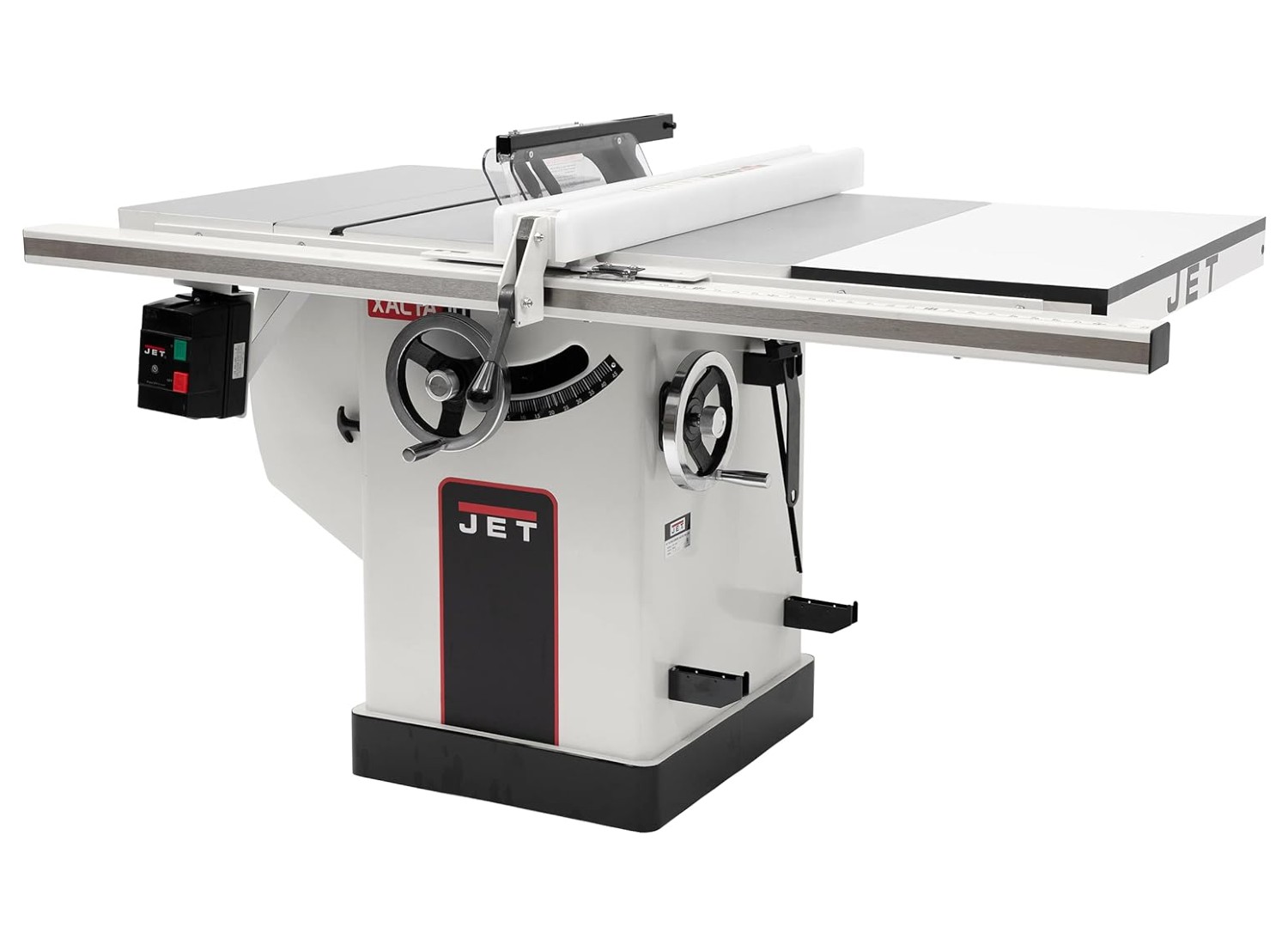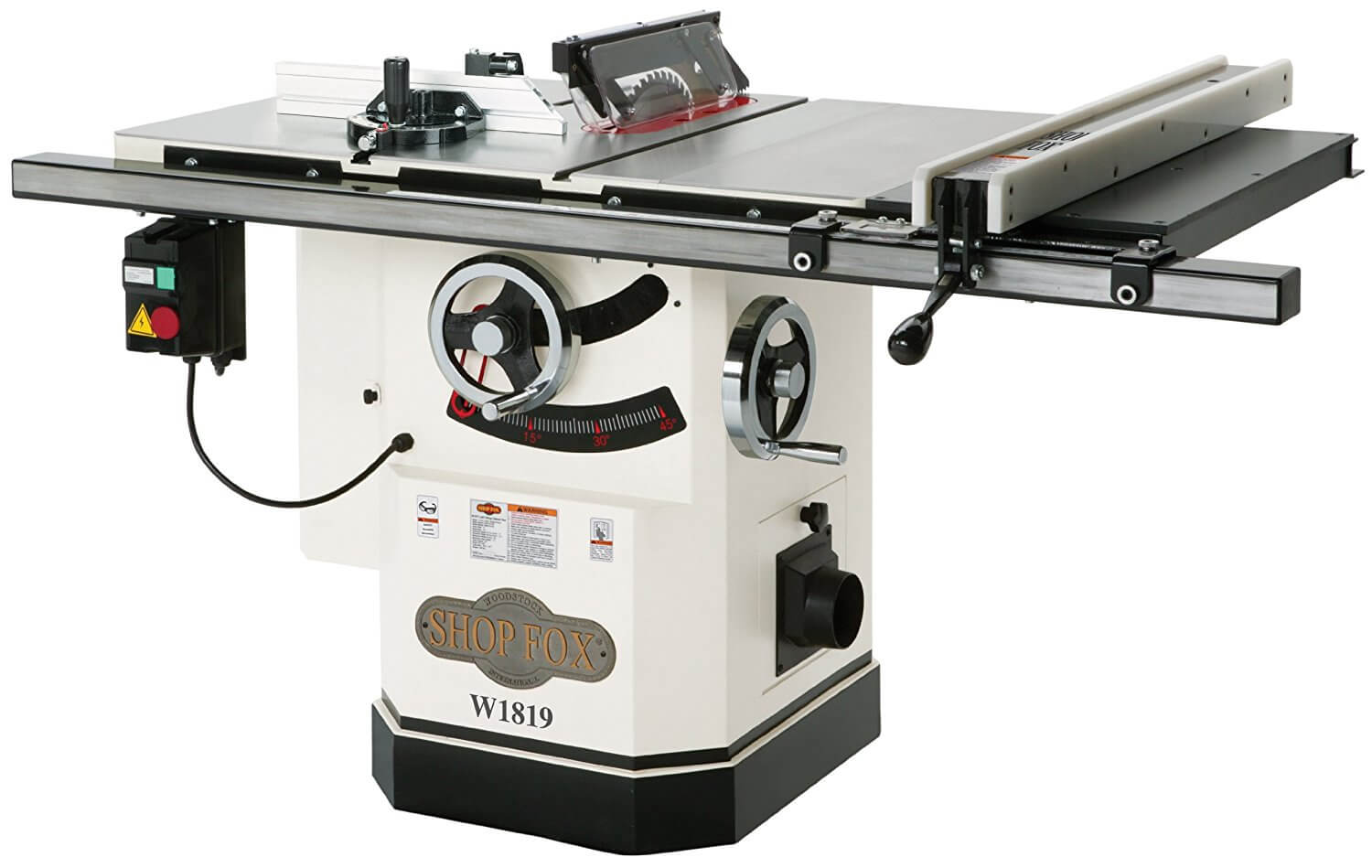Top 3 Table Saw Features for Cabinet Makers

Selecting the right table saw is paramount for cabinet makers, directly impacting both the quality and speed of their work. Precision and efficiency are key, and certain features significantly contribute to achieving both. This section will highlight three essential features that cabinet makers should prioritize when investing in a table saw.
Essential Table Saw Features for Cabinet Makers
For cabinet makers, precision is paramount. Three features stand out as crucial for achieving the accuracy and efficiency needed in this demanding craft: a powerful motor, a robust and accurate fence system, and a stable and flat table surface. A powerful motor ensures smooth cuts through hardwoods, while a precise fence system enables accurate rip cuts and repeatability. A stable table ensures the workpiece remains secure and prevents movement during the cutting process, minimizing errors. Let’s delve deeper into each feature.
Motor Power and Blade Size
A powerful motor is crucial for clean, consistent cuts, especially when working with hardwoods commonly used in cabinet making. A motor with at least 1.75 horsepower (HP) is recommended, although 2 HP or higher is preferable for heavier workloads and larger blades. Larger blades (10-inch or 12-inch) offer greater cutting capacity and are ideal for ripping wider boards. For example, the SawStop PCS3123 Professional Cabinet Saw boasts a powerful 3 HP motor and a 12-inch blade, making it well-suited for demanding cabinet making projects. In contrast, a lower-powered saw might struggle with thicker materials, leading to slower cutting speeds, increased motor strain, and potentially inaccurate cuts.
Table Saw Top Materials: Cast Iron vs. Aluminum, Best table saw for cabinet making
The table saw top plays a vital role in ensuring stability and accuracy. Both cast iron and aluminum are common materials, each offering distinct advantages and disadvantages.
| Feature | Cast Iron | Aluminum |
|---|---|---|
| Stability | Excellent; very heavy and dampens vibrations effectively. | Good; lighter weight can lead to more vibration, especially with larger blades. |
| Accuracy | Excellent; maintains flatness and precision over time. | Good; can be susceptible to warping or bending under heavy use. |
| Longevity | Excellent; highly durable and resistant to wear and tear. | Good; lighter and more prone to damage from impacts. |
| Weight | Very heavy, requires robust stand. | Lighter, easier to move. |
| Cost | Generally more expensive. | Generally less expensive. |
| Examples | Many high-end cabinet shop saws use cast iron. | Many contractor saws utilize aluminum for portability. |
Fence Systems for Precise Cuts
The fence is the guiding system for rip cuts, and its accuracy is paramount for precise cabinet making. Various fence types offer different levels of accuracy and adjustability. Choosing the right fence can significantly improve cutting accuracy and repeatability.
Best table saw for cabinet making – Several types of fences are available, each with its own advantages and disadvantages:
- T-Square Fence: A simple, often included fence on basic saws. It’s easy to use and adjust but lacks the precision and repeatability of more advanced systems.
- Pros: Simple, inexpensive, easy to adjust.
- Cons: Can be less accurate, prone to drift, limited adjustability.
- Biesemeyer-Style Fence: Known for its superior accuracy and repeatability. It features a precision-ground rail and a locking mechanism that minimizes fence movement during cutting.
- Pros: Highly accurate, repeatable cuts, robust construction.
- Cons: More expensive than T-square fences.
- Other Advanced Fences: Some manufacturers offer proprietary fence systems with features like micro-adjustments and integrated measuring systems. These offer the highest level of precision but come at a premium price.
- Pros: Highest level of accuracy, often includes additional features.
- Cons: Most expensive option.
Popular Table Saw Brands for Cabinetry: Best Table Saw For Cabinet Making

Choosing the right table saw for cabinet making is crucial for achieving precise cuts and efficient workflow. The market offers a wide array of brands, each with its own strengths and weaknesses. Understanding these differences is key to selecting a saw that meets your specific needs and budget. This section compares three leading brands known for their performance and reliability in the demanding world of cabinetry.
Several factors contribute to a table saw’s suitability for cabinet making, including motor power, blade quality, fence precision, and overall build quality. The brands discussed below represent a range of price points and performance capabilities, offering options for both professional cabinetmakers and serious hobbyists.
Comparison of Leading Table Saw Brands
The following table compares three popular table saw brands – Festool, SawStop, and Laguna – highlighting their key features, strengths, and weaknesses. This comparison focuses on factors relevant to cabinetmaking, such as accuracy, durability, and ease of use.
| Feature | Festool (e.g., TS 55 REQ) | SawStop (e.g., Contractor Saw) | Laguna (e.g., Fusion Series) |
|---|---|---|---|
| Price | High | High-Medium | Medium |
| Motor Power (HP) | Variable, typically around 1.8 HP | Typically 1.75 HP to 3 HP depending on model | Variable, ranging from 1.5 HP to 3 HP+ depending on model |
| Accuracy & Precision | Exceptional; known for its precise cuts and smooth operation. | Very good; the fence system is robust and accurate. | Good; offers decent accuracy but might require more frequent calibration than Festool. |
| Durability | Excellent; built to withstand demanding professional use. | Excellent; renowned for its robust construction and safety features. | Good; generally durable but may not be as robust as Festool or SawStop in extreme use. |
| Safety Features | Good; incorporates various safety features, but not the same level as SawStop. | Exceptional; the patented brake system is a major safety advantage. | Good; standard safety features, but lacks the advanced safety system of SawStop. |
| Portability | Relatively portable for its class, often used on job sites. | Less portable, typically a stationary saw. | Relatively portable depending on the model, suitable for workshops or smaller job sites. |
Impact of Motor Size and Horsepower on Cutting Performance
The motor size and horsepower significantly impact a table saw’s cutting performance. Higher horsepower generally translates to smoother cuts, especially when ripping hardwoods or making thicker cuts. However, horsepower isn’t the only factor; blade quality and the saw’s overall design also play a crucial role.
For cabinet making, a saw with at least 1.75 HP is generally recommended. This power level handles most common cuts with ease. For larger projects or when working with dense hardwoods, a higher horsepower (2.5 HP or more) is beneficial. Lower horsepower saws (around 1.5 HP) might struggle with ripping wide boards or making deep cuts in hardwoods, potentially leading to binding or stalling.
Ripping (cutting along the grain) generally requires more power than crosscutting (cutting against the grain). When ripping wide boards of hardwood, a higher horsepower motor is essential to prevent the blade from binding and potentially causing kickback. Crosscutting, however, can be performed effectively with lower horsepower saws, provided the blade is sharp and the workpiece is properly supported.
Hypothetical Cabinet Project and Table Saw Feature Requirements
Let’s consider a hypothetical project: building a set of kitchen cabinets with raised panel doors and drawers. This project requires a range of cuts, including ripping for cabinet sides and shelves, crosscutting for drawer fronts, and intricate cuts for the raised panel details. A high-quality table saw with specific features would significantly improve efficiency and accuracy.
For this project, a table saw with the following features would be most beneficial:
- High Horsepower Motor (2.5 HP or higher): To handle ripping wide hardwood sheets for cabinet sides and shelves without stalling or binding.
- Precise Fence System: Crucial for accurate ripping and ensuring parallel cuts for cabinet components. A fence with micro-adjustments and a locking mechanism is essential for consistent results.
- Zero-Clearance Throat Plate: Minimizes chip-out when crosscutting and improves overall cut quality, particularly important for fine details on raised panel doors.
- Dado Stack: Allows for creating accurate grooves for shelf supports and drawer slides. A dado stack is invaluable for creating precisely sized dadoes for cabinet joinery.
- Miter Gauge: For accurate crosscuts, especially when cutting drawer fronts and other components that require precise angles. A high-quality miter gauge with positive stops is beneficial.
Safety and Maintenance of Table Saws for Cabinet Makers

Cabinet making demands precision and skill, but working with power tools like table saws also necessitates a strong commitment to safety and regular maintenance. Neglecting either can lead to serious injury or damage to your equipment, impacting both your work and your well-being. This section focuses on crucial safety precautions and a detailed maintenance procedure to ensure your table saw operates efficiently and safely for years to come.
Critical Safety Precautions for Table Saw Operation
Prioritizing safety is paramount when operating a table saw. The high-speed rotating blade presents significant hazards if proper precautions are not consistently followed. Ignoring these precautions can result in serious injury, including amputation of fingers or hands, severe lacerations, and eye injuries.
- Always use a push stick and featherboard: Never use your hands to guide material close to the blade. Push sticks and featherboards provide a safe distance, preventing your hands from entering the blade’s path. Failing to use these can result in severe hand injuries.
- Ensure proper blade alignment and sharpness: A dull or misaligned blade increases the risk of kickback, which can propel the workpiece back towards the operator with considerable force. Regular blade maintenance is crucial for both safety and cut quality. A dull blade requires more force, increasing the likelihood of accidents.
- Wear appropriate safety gear: Eye protection is non-negotiable. Safety glasses or a face shield must always be worn to protect against flying debris. Hearing protection is also recommended due to the loud noise generated by the saw. Failure to wear appropriate gear can lead to eye injuries, hearing loss, and other potential harm.
- Maintain a clear work area: Clutter around the table saw can create tripping hazards and impede your ability to react quickly in case of an emergency. Keep the area free of debris and tools. A cluttered workspace significantly increases the risk of accidents.
- Never reach over the blade: Reaching over the blade while it’s running is extremely dangerous. Always wait until the blade comes to a complete stop before making any adjustments or clearing away sawdust. Reaching over a running blade is a guaranteed path to serious injury.
Table Saw Setup and Maintenance Procedure
Regular maintenance is key to ensuring your table saw remains accurate, efficient, and safe. This procedure Artikels the steps to maintain optimal performance and prolong the life of your tool.
1. Blade Alignment: Using a combination square and feeler gauge, check the blade’s alignment with the miter gauge slot. Adjust as needed using the blade adjustment mechanism. An improperly aligned blade will lead to inaccurate cuts and potentially dangerous kickback.
2. Fence Adjustment: Ensure the fence is square to the blade using a square and a straight edge. Adjust the fence using the adjustment knobs, checking for squareness frequently. A misaligned fence will result in inaccurate cuts and can cause binding, increasing the risk of kickback.
3. Regular Cleaning: After each use, remove all sawdust and debris from the table, blade, and motor housing using a brush and compressed air. Regular cleaning prevents buildup that can interfere with operation and cause damage. Accumulated sawdust can also create fire hazards.
4. Blade Maintenance: Sharpen or replace the blade as needed. A dull blade increases the risk of kickback and produces poor quality cuts. A sharp blade also requires less force, reducing the chance of accidents.
5. Lubrication: Lubricate moving parts as recommended by the manufacturer. Regular lubrication ensures smooth operation and prevents premature wear. Neglecting lubrication will lead to increased friction and potential damage to moving parts.
